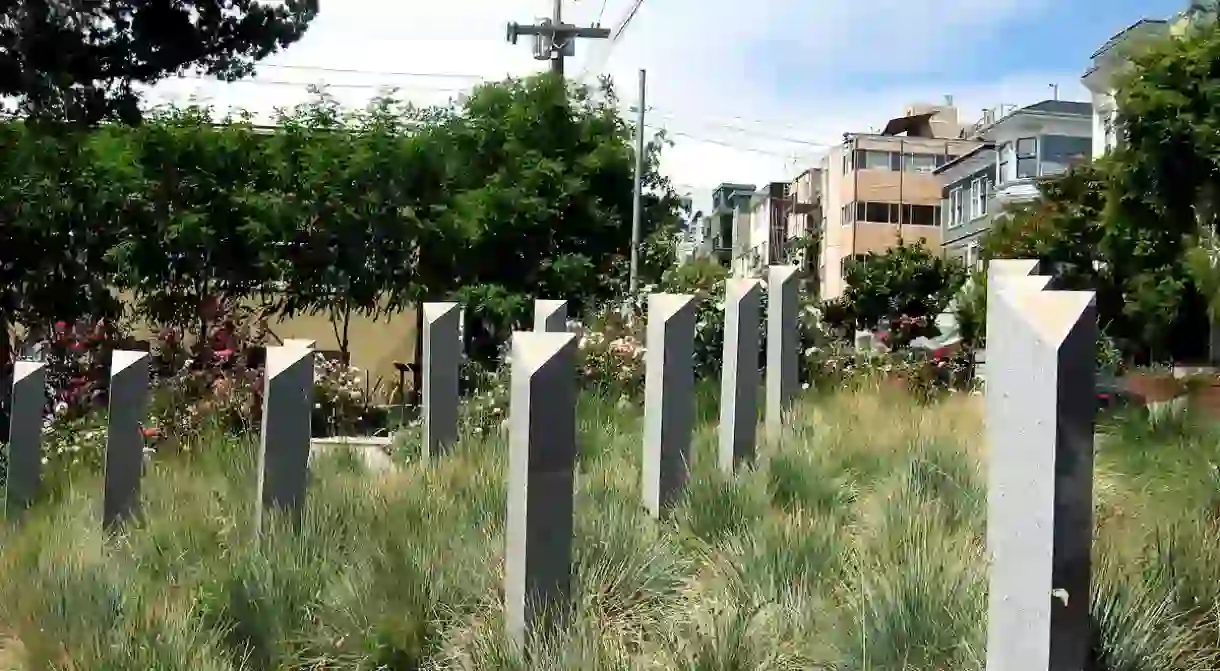SF's Pink Triangle Park: Memorializing LGBT Lives Lost

Just above the Castro Street MUNI station, Pink Triangle Park stands small but significant alongside the traffic of San Francisco’s Market Street. The park was opened in December 2001, serving as the first free-standing monument in the US to memorialize the 15,000 members of the LGBT community estimated to have been killed during the Holocaust.

The triangular park features 15 triangular white granite pylons with pink triangles embedded into their peaks, each representing 1,000 persecuted members of the LGBT community. The pylons are arranged in the shape of a triangle, surrounding a larger pink quartz triangle in the middle of the park. The triangle is oriented to point toward Harvey Milk Plaza, which memorializes Milk (the first openly gay person to be elected to public office in California) by flying a 20×30-foot rainbow flag that can be seen from some of the farthest edges of the city.

The shape of the park and its pylons recall the pink triangles that gay men were forced to wear sewn onto their clothing in Nazi Germany to isolate and shame them. Even after Germany was defeated, those wearing pink triangles were forced to return to imprisonment. The park seeks to reclaim the pink triangle as a symbol of celebration, rather than shame, for those LGBT lives.
Pink Triangle Park is located in the heart of San Francisco’s Castro District, a neighborhood famous for its vibrant, colorful celebration of gay pride. When visiting the park, be sure to check out some of the other gems the neighborhood has to offer, including some of the city’s best restaurants, brunches, bars, and much more.

The Castro/Eureka Valley Neighborhood Association, which commissioned Pink Triangle Park, explains its intentions: ‘This is a civil rights park… Throughout history, there are times when prejudice overwhelms all reason and humanity… Pink Triangle Park and Memorial is a place of remembrance, reflection and education.’
The park was designed by artists Robert Bruce and Susan Martin. In a statement about the park, they claim: ‘We wanted the sculpture to be contemplative. We wanted to mourn the dead (past), to celebrate the living (present), and to hope for those to come (future).’ The artists express their hope that the park’s visitors will ‘Respect each other as this sculpture respects the site… Contemplate the softness of the plants and the firmness of the granite… Locate the softness and the firmness within themselves… Remember that gay men wore pink triangles, lesbians wore black triangles, gypsies wore brown triangles, Poles wore blue triangles, social democrats and other political prisoners wore red triangles, and Jews wore yellow stars… [and] think about how persecution of any individual or single group of people damages all humanity.’














